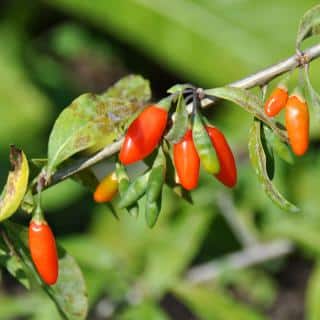

If you’ve got a sweet tooth but don’t have a very large garden for growing fruit trees, try planting exotic berry shrubs that survive in temperate climates.
It is a brilliant and unique enjoyment.
Here is a selection of small exotic fruits that resist the cold. Perfect for planting on a balcony!
Unlike European honeysuckle which bears poisonous red berries, this variety native to Siberia produces edible blue-colored fruits.
Lonicera kamtschatica or honeyberry never grows any taller than 5 feet (1.5 meters). It can resist temperatures down to -40°F (also -40°C) ! But it is vulnerable to drought. Mulch the base of the shrub in summer. It loves cool and acidic soil (heath soil), not chalky. Plant in part sun and to increase fruit formation, plant two or more specimens nearby.
Its not very sweet berries taste somewhat similar to bilberry or kiwi and are perfect for diabetic persons and those who must watch their weight. They can be eaten raw, dried, in jams, syrups, etc.
Cranberry is a low-lying shrub that never quite makes it any higher than 12 inches (30 cm) tall. Native to North America, it is hardy down to -22°F (-30°C). It loves cool, moist and and acidic soil. Exposure is either full sun or part sun.
Its red berries, cranberries, can be nibbled on raw or dried, or paired with main courses and desserts and added to juice or jam. Their antioxidant properties are appreciated to reduce tooth inflammation and cystitis.

Its red-orange colored goji berries ripen from August to October. Replete with vitamins, minerals and antioxidants, they have been part of Chinese medicine for millennia.
They can often be found in nutrition stores or organic food shops.
Sometimes called “murtillas”, the light red berries of the Chilean guava are up to ½ inch (1 cm) across. They are harvested in summer and can be consumed raw or in ice cream. Their fragrance is close to that of wild strawberries.
You can grow this shrub as a standalone, in a bed, or in a garden box on a terrace or balcony. Soil must drain well and not be chalky. Hardy down to 17°F (-8°C), it can be planted in sun or part sun.
Pierrick Le Jardinier